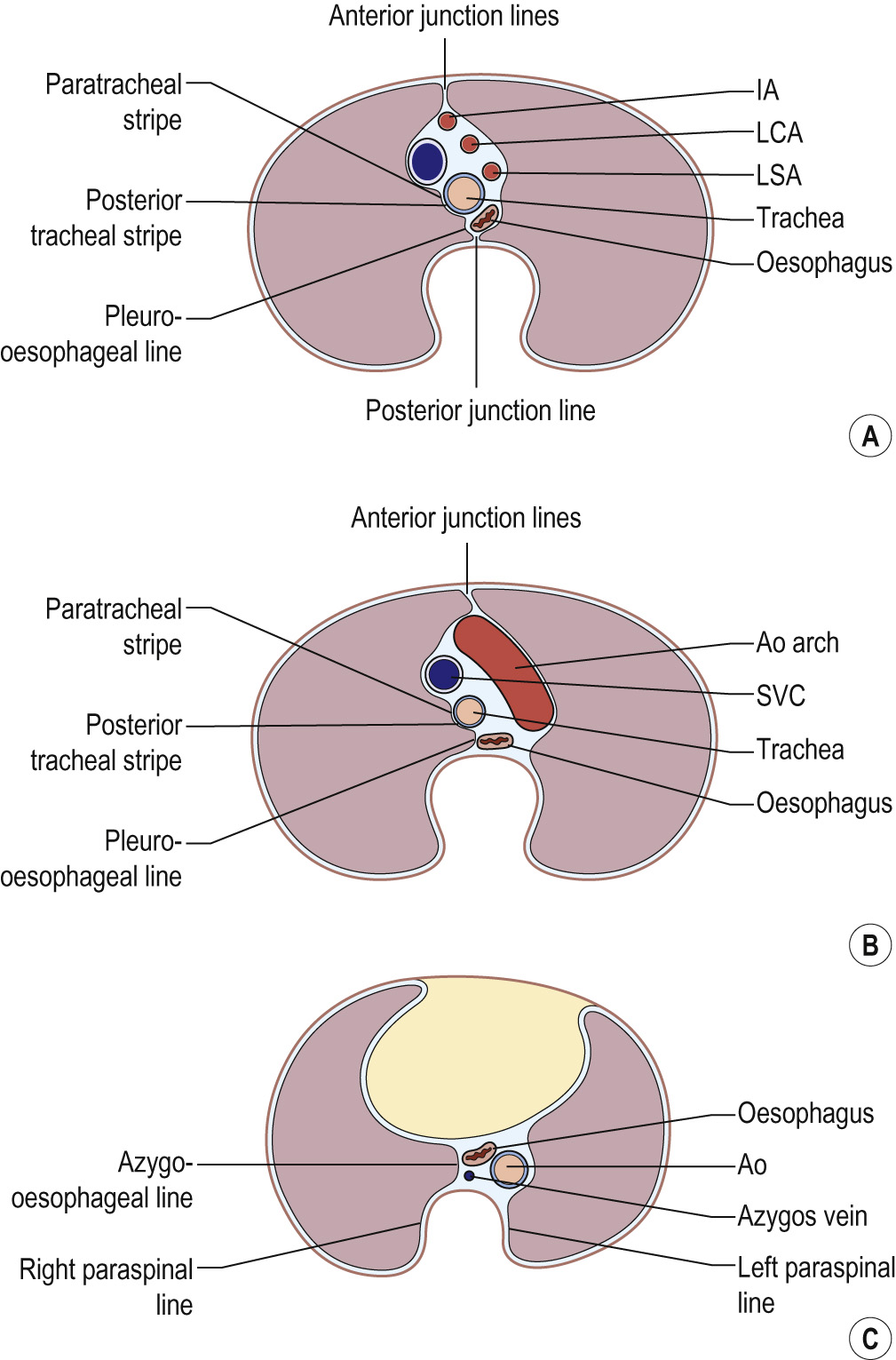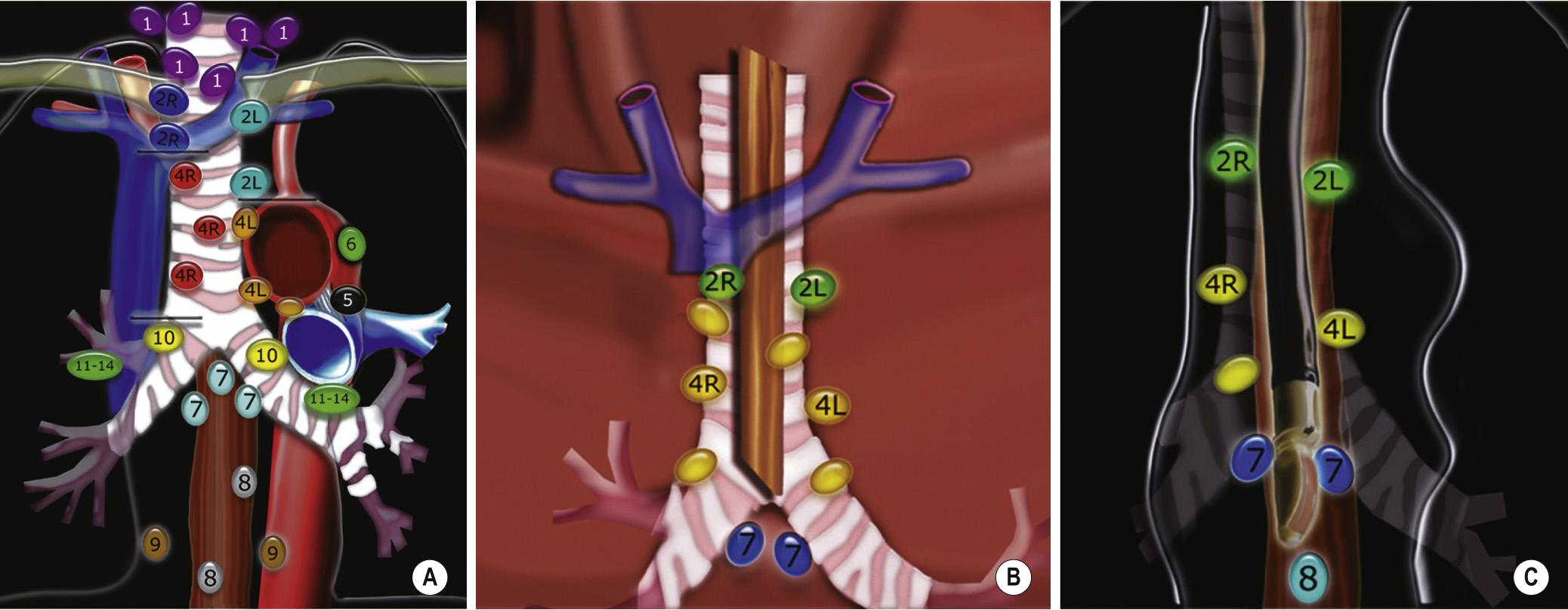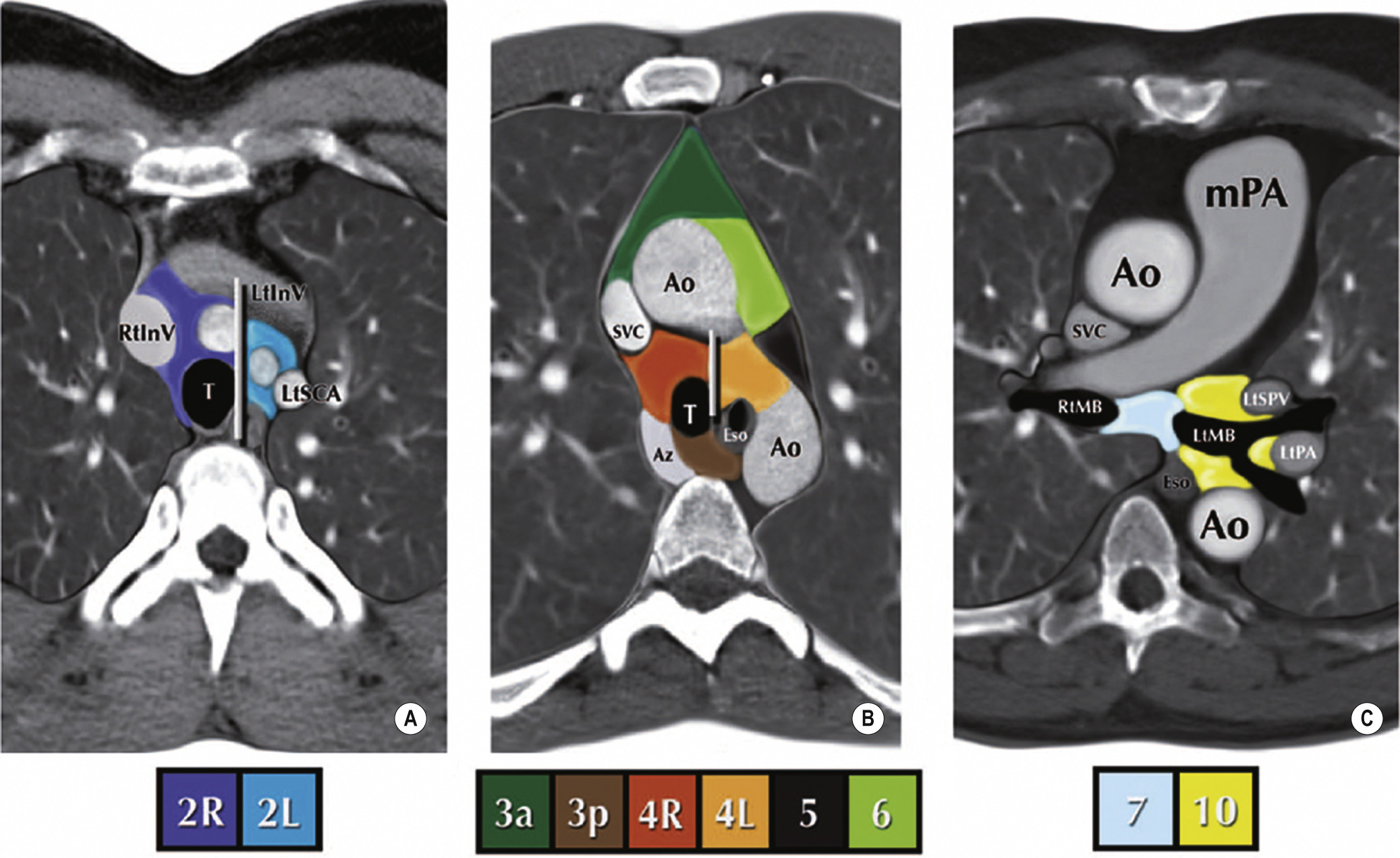Physical Address
304 North Cardinal St.
Dorchester Center, MA 02124
| Tx | The primary tumour is not assessable | |
| T0 | There is no evidence of primary tumour | |
| Tis | Carcinoma in situ (DCIS, LCIS, or Paget's disease without a tumour mass) |
|
| T1 | The tumour measures ≤ 2 cm * | |
| T1mic | Micro-invasion ≤ 0.1 cm * | |
| T1a | > 0.1 cm but ≤ 0.5 cm * | |
| T1b | > 0.5 cm but ≤ 1 cm * | |
| T1c | > 1 cm but ≤ 2 cm * | |
| T2 | The tumour measures > 2 cm but ≤ 5 cm * | |
| T3 | The tumour measures > 5 cm * | |
| T4 | A tumour of any size involving the chest wall or skin (including inflammatory breast cancer) | |
| T4a | Chest wall extension | |
| T4b | Oedema ▸ breast skin ulceration ▸ satellite skin nodules to the same breast | |
| T4c | Combined T4a and T4b features | |
| T4d | An inflammatory carcinoma | |
| Nx | The nearby lymph nodes are not assessable | |
| N0 | There is no spread | |
| N1 | There is spread to movable ipsilateral level I and II axillary nodes | |
| N2 | There is spread to fixed ipsilateral level I and II axillary nodes, or ipsilateral internal mammary nodes without axillary involvement | |
| N2a | There is spread to fixed level I and II ipsilateral axillary nodes | |
| N2b | There is spread to ipsilateral internal mammary nodes without axillary node involvement | |
| N3 | Metastases in ipsilateral infraclavicular (level III axillary) lymph node(s) with or without level I, II axillary lymph node involvement | |
| N3a | Metastases in ipsilateral infraclavicular lymph node(s). | |
| N3b | Metastases in ipsilateral internal mammary lymph node(s) and axillary lymph node(s) | |
| N3c | Metastases in ipsilateral supraclavicular lymph node(s) | |
| M0 | There is no distant spread |
| M1 | There is distant spread |
| Incomplete assessment | Management | Likelihood of cancer |
|---|---|---|
| Category 0: incomplete – requires additional imaging evaluation and/or prior mammograms for comparison | Recall for additional imaging and/or comparison with prior examination(s) | N/A |
| Final assessment | Management | Likelihood of cancer |
| Category 1: Negative | Routine mammography screening | Essentially 0% |
| Category 2: Benign | Routine mammography screening | Essentially 0% |
| Category 3: Probably Benign | Short-interval (6 month) follow-up or continued surveillance mammography | > 0% but ≤ 2% |
| Category 4: Suspicious | Tissue diagnosis | > 2% but < 95% |
|
> 2% to ≤ 10% | |
|
> 10% to ≤ 50% | |
|
≥ 50% to < 95% | |
| Category 5: Highly suggestive of malignancy | Tissue diagnosis | ≥ 95% |
| Category 6: Known biopsy-proven malignancy | Surgical excision when clinically appropriate | N/A |
| TX | Tumour cannot be assessed (or is not visualized) | |
| T0 | There is no evidence of a primary tumour | |
| Tis | Carcinoma in situ | |
| T1 | A tumour measuring < 3 cm (greatest dimension) ▸ it is surrounded by lung or visceral pleura ▸ there is no bronchoscopic evidence of invasion within the main bronchus | |
| T1(mi) T1a |
Minimally invasive adenocarcinoma Tumour measuring ≤ 1 cm (greatest dimension) |
|
| T1b T1c |
Tumour measuring > 1 cm but ≤ 2 cm (greatest dimension) Tumour measuring > 2 cm but ≤ 3 cm |
|
| T2 | Tumour measuring >3 cm but ≤ 5 cm, or tumour with any of the following features:
|
|
| T2a | Tumour measuring > 3 cm but ≤ 4 cm (greatest dimension) ▸ invasion across a fissure | |
| T2b | Tumour measuring > 4 cm but ≤ 5 cm (greatest dimension) | |
| T3 | Tumour measuring > 5 cm but not more than 7 cm (greatest dimension) or directly invades any of the following structures:
|
|
| T4 | Tumour measuring > 7 cm (greatest dimension) or of any size that invades any of the following structures:
Or associated with separate tumour nodule(s) in a different ipsilateral lobe to that of the primary. |
|
| Nx | The lymph nodes are not assessable |
| N0 | There is no regional nodal involvement |
| N1 | There are involved ipsilateral peribronchial (± ipsilateral) hilar and intrapulmonary lymph nodes |
| N2 | There are involved ipsilateral mediastinal (± subcarinal) lymph nodes |
| N3 | There are involved contralateral mediastinal or hilar nodes, ipsilateral or contralateral scalene nodes, or supraclavicular nodes |
| M0 | There are no distant metastases | |
| M1 | There are distant metastases | |
| M1a | Separate tumour nodule(s) in a contralateral lobe ▸ tumour with pleural or pericardial nodule(s) or a malignant pleural or pericardial effusion | |
| M1b M1c |
Single extrathoracic metastasis in a single organ Multiple extrathoracic metastases in one or several organs |
|



| Zone | Side | Border | Anatomical structure |
|---|---|---|---|
| 1 | Upper | Lower margin of cricoid cartilage | |
| 1 | Lower | Clavicles/manubrium | |
| 1 | Left/right | Midline of trachea | |
| 2R | Right | Upper | Apex of right lung/upper border of manubrium |
| 2R | Right | Lower | Intersection of caudal margin of innominate vein with trachea/nodes to left lateral border of trachea |
| 2L | Left | Upper | Apex of left lung/upper border of manubrium |
| 2L | Left | Lower | Superior border of aortic arch |
| 3a | Anterior | Upper | Apex of chest |
| 3a | Anterior | Lower | Level of carina |
| 3a | Anterior | Anterior | Posterior aspect of sternum |
| 3a | Anterior | Posterior | Anterior border of superior vena cava |
| 3a | Anterior | Upper | Apex of chest |
| 3a | Anterior | Lower | Level of carina |
| 3a | Anterior | Anterior | Posterior aspect of sternum |
| 3a | Anterior | Posterior | Left carotid artery |
| 3p | Posterior | Upper | Apex of chest |
| 3p | Posterior | Lower | Carina |
| 4R | Right | Para-/pretracheal—upper | Intersection of caudal margin of innominate vein with trachea |
| 4R | Right | Right para-/pretracheal—lower | Lower border of azygos vein |
| 4L | Left | Left paratracheal to lig. art.—upper | Upper margin of aortic arch |
| 4L | Left | Left paratracheal to lig. art.—lower | Upper rim of left main pulmonary artery |
| 5 | Subaortic lateral to lig. art.—upper | Lower border of aortic arch | |
| 5 | Subaortic lateral to lig. art.—lower | Upper rim of left main pulmonary artery | |
| 6 | Anterior and lateral to ascending aorta and aortic—upper | Line tangential to upper border of aortic arch | |
| 6 | Anterior and lateral to ascending aorta and aortic—lower | Lower border of aortic arch | |
| 7 | Mediastinal subcarinal—upper | Carina of trachea | |
| 7 | Right | Mediastinal subcarinal—lower | Lower border of bronchus intermedius |
| 7 | Left | Mediastinal subcarinal—lower | Upper border of lower lobe bronchus |
| 8 | Right | Paraoesophageal excluding subcarinal—upper | Lower border of bronchus intermedius |
| 8 | Left | Paraoesophageal excluding subcarinal—upper | Upper border of lower lobe bronchus |
| 8 | Paraoesophageal excluding subcarinal—lower | Diaphragm | |
| 9 | Within pulmonary ligament incl. inf. pulm. vein—upper | Inferior pulmonary vein | |
| 9 | Within pulmonary ligament incl. inf. pulm. vein—lower | Diaphragm | |
| 10 | Right | Hilar—adjacent to mainstem bronchi and hilar vessels—upper | Lower rim of azygos vein |
| 10 | Left | Hilar—adjacent to mainstem bronchi and hilar vessels—lower | Upper rim of pulmonary artery |
| 10 | Hilar—adjacent to mainstem bronchi and hilar vessels | Interlobar region bilaterally | |
| 11 | Right | Interlobar—superior subgroup | a#11s: between upper lobe bronchus and bronchus intermedius |
| 11 | Right | Interlobar—inferior subgroup | a#11i: between middle and lower lobe bronchi |
| 11 | Left | Interlobar | Between upper lobe bronchus and lower lobe bronchi |
| 12 | Lobar | Adjacent to lobar bronchi | |
| 13 | Segmental | Adjacent to segmental bronchi | |
| 14 | Subsegmental | Adjacent to subsegmental bronchi |
* International lymph node map in the seventh edition of the TNM classification for lung cancer.
| Tx | Tumour is not assessable | |
| T0 | No primary tumour | |
| Tis | Carcinoma in situ; high grade dysplasia | |
| T1 | Tumour invades the lamina propria, muscularis mucosae, or submucosa | |
| T1a | Lamina propria or muscularis mucosae | |
| T1b | Submucosa | |
| T2 | Tumour invades the muscularis propria | |
| T3 | Tumour invades the adventitia | |
| T4 | Tumour invades adjacent structures | |
| T4a | Involvement of the pleura, pericardium, diaphragm, or adjacent peritoneum | |
| T4b | Unresectable tumour involving other adjacent structures (e.g. aorta, vertebral body, or trachea) | |
| NX | Regional lymph nodes cannot be assessed | |
| N0 | There is no regional nodal disease | |
| N1 | There are regional nodal metastases | |
| N1 | 1 to 2 regional lymph nodes | |
| N2 | 3 to 6 regional lymph nodes | |
| N3 | >6 regional lymph nodes | |
| M0 | There are no tumour metastases |
| M1 | There are distant metastases |
Cancers involving the esophagogastric junction (OGJ) that have their epicenter within the proximal 2 cm of the cardia (Siewert types I/II) are to be staged as esophageal cancers.
Cancers whose epicenter is more than 2 cm distal from the OGJ, even if the OGJ is involved, will be staged using the stomach cancer TNM
| Tx | Primary tumour is not assessable | |
| T0 | There is no evidence of primary tumour | |
| Tis | Carcinoma in situ | |
| T1 | Tumour invades the lamina propria or submucosa | |
| T1a | Invasion of the lamina propria or muscularis mucosae | |
| T1b | Invasion of the submucosa | |
| T2 | Tumour invades the muscularis propria | |
| T3 | Tumour invades the subserosa without invading any adjacent structures | |
| T4 | Tumour perforates the serosa or invades adjacent structures | |
| T4a | Perforation of the serosa (visceral peritoneum) | |
| T4b | Invades adjacent structures | |
| Nx | The lymph nodes are not assessable | |
| N0 | There is no regional nodal involvement | |
| N1 | Tumour spread to 1–2 regional nodes | |
| N2 | Tumour spread to 3–6 regional nodes | |
| N3 | Tumour spread to ≥ 7 regional nodes | |
| N3a | 7–15 nodes | |
| N3b | ≥ 16 nodes | |
| M0 | There is no distant spread |
| M1 | There is distant spread |
Become a Clinical Tree membership for Full access and enjoy Unlimited articles
If you are a member. Log in here